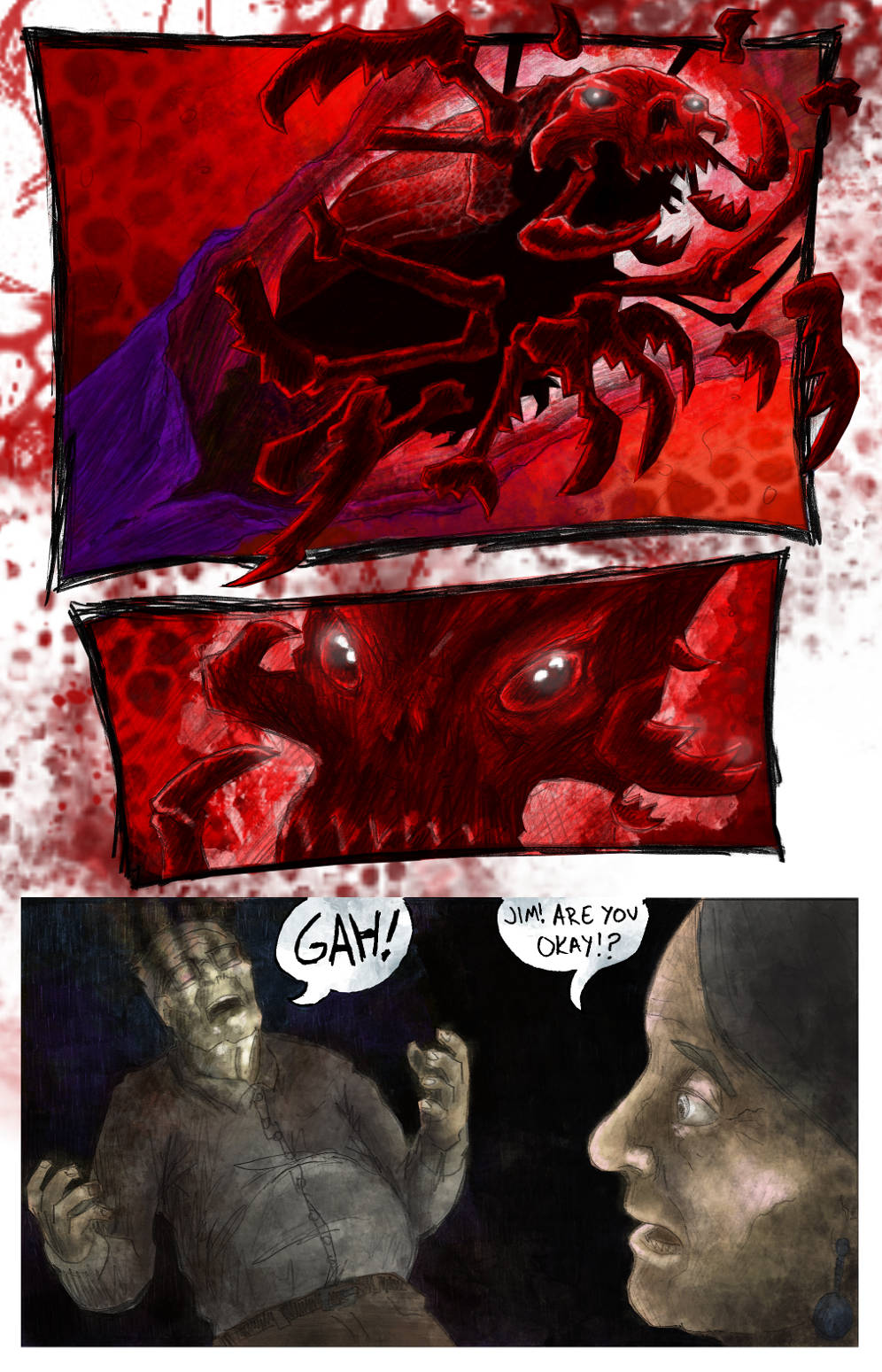The Archive
A few observations about the last few pages:
I love how the panels for the monster have been changing. The frames seem to be bursting apart as the creature rips through Jim’s body. It mirrors the progress of the story.
Film is, at it’s foundation, a storytelling medium of visuals and non-dialogue sound. Early filmmakers could only use visuals and music to tell the story, and I still believe to this day (as Hitchcock did) that the best storytelling is often done without any dialogue at all. There’s a saying in a film to show and not tell - the basic idea is that it’s more exciting to see something happen and not have the storyteller tell it to you. For example, if this page only consisted of Jim telling Jennie that something was hurting him, but we didn’t see much of the monster (or any of it), there wouldn’t be as much tension.
If you’re not careful as a storyteller, dialogue can crowd a scene - in any medium. When Jerem adapted this story, he cut out a bunch of the dialogue (I can’t remember if it’s on this page or other ones) - trimming it to the essentials - and I think it gives him (and Shi) the freedom to tell the story with visual means.
This is also where his concept of the creature started to further branch off from the one I saw in my head. As I mentioned earlier, I never imagined that the creature had eyes - it was kind of like a blind automaton. At this stage in the story, it was just doing what it had to do, like a clock passing time - something that can’t be stopped, and just as impersonal. But I really like the direction that Jerem took it. There is so much movement and attitude as the creature bursts through Jim’s veins and the eyes create an expression that says a lot about the creature’s personality. It’s a very different idea than I had, and I think it fits with the visual and storytelling style well. It’s cool to see, yet again, how someone can take an idea and change it into something else - yet still keep the essence of the story intact.




